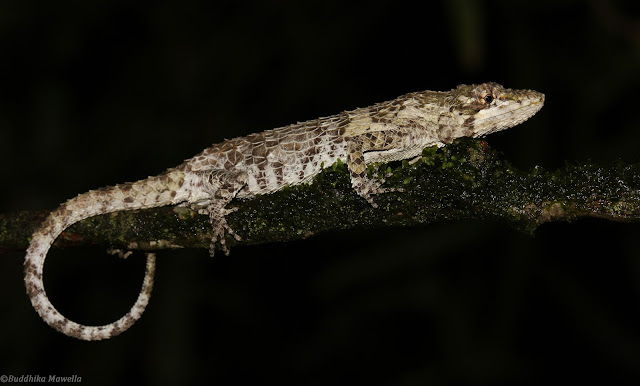English: Erdelen's horn lizard
Sinhala: අර්ඩලන්ගේ අං කටුස්සා
Binomial name: Ceratophora erdeleni
Erdelen's horned lizard is a species of lizards found in the eastern part of Sinharaja.
Population of this lizard has been restricted to a very limited area in the Morningside and Rakwana region of Sinharaja. Although it is called a horned lizard, it does not always have a prominent horn. A small remnant horn can sometimes be seen. But there is a species of lizard called Ceratophora stoddartii that lives in the central highlands of Sri Lanka who bears a more prominent horn compared to Ceratophora erdeleni.
Looking at a phylogenetic tree, it seems that these two species have recently been separated from each other and evolved into two species.
Most likely the topography of Rakwawna mountains and central highlands has been the reason to evolve them as two separate species.


































